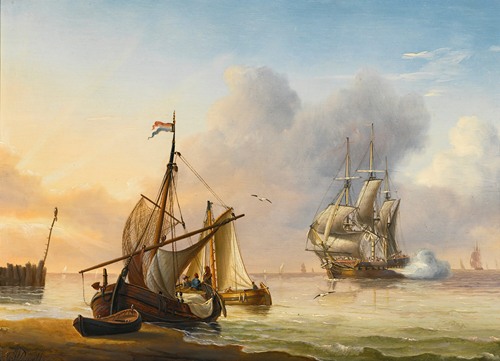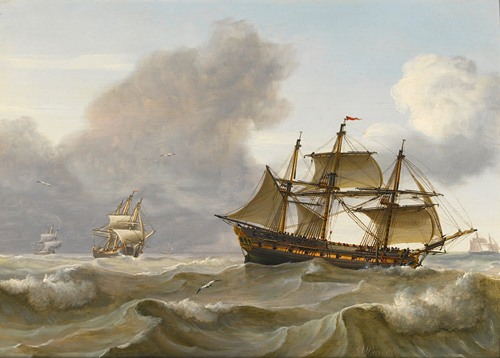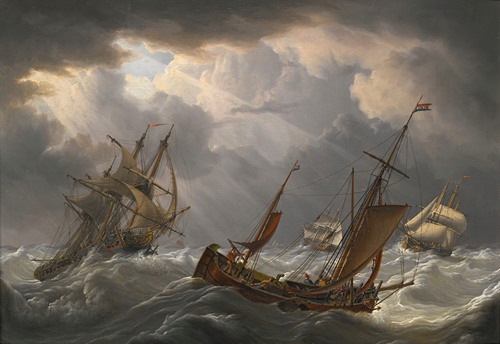


Born in Chichester, C M Powell was a self-taught artist, a fact which reflects great credit on him when one considers the beautiful draughtsmanship and ‘professional’ execution of his pictures. Although it is known that he served his apprenticeship as a sailor, it is unclear as to whether or not Powell was ever a member of the Royal Navy. It is possible that he did join the Navy, or was press-ganged into service, and subsequently absconded. A glance at the Royal Academy records between 1807 and 1821 indicates that he moved frequently, occupying no fewer than seven homes over a period of fourteen years, suggesting perhaps that he may well have been avoiding being retaken.
It is also noticeable that Powell’s subjects rarely feature naval vessels; when they do appear they are either in the distance or middle-distance of the composition, the foreground being given over to fishing craft and coastal vessels.
Nevertheless, it seems unlikely that a marine artist as well known as Powell, with his necessary attachment to the sea, could have managed to escape recapture for long. It is more likely therefore that there are other reasons to explain Powell’s reluctance to settle down in one place for long.
One such may have been his interest in travelling. He travelled extensively, painting Plymouth, Southampton, Portsmouth and numerous subjects in the English Channel. He is known to have painted scenes in the Mediterranean and he visited Holland frequently -–indeed, the Dutch marine artists provided much of his inspiration, his works fully reflected the traditional Dutch style of sea painting.
Powell married and had eight children. All his recorded addresses were in London: Paddington, Soho, The Haymarket, Baker Street and Montague Square – locations which indicate fluctuating financial fortunes; however he ultimately died penniless aged 49.
His London exhibits totalled 40, of which twenty-nine were at the Royal Academy and eleven at the British Institution. Nearly all these pictures were true sea pieces. Although he never benefited from the financial security that a patron might have brought him, he was left free to paint whatever he wished in his own style.
Powell had a first-hand understanding of the sea and of how boats move in the water, and he also used to great effect the dramatic play of light and dark, inspired by the 18th century Dutch masters.


